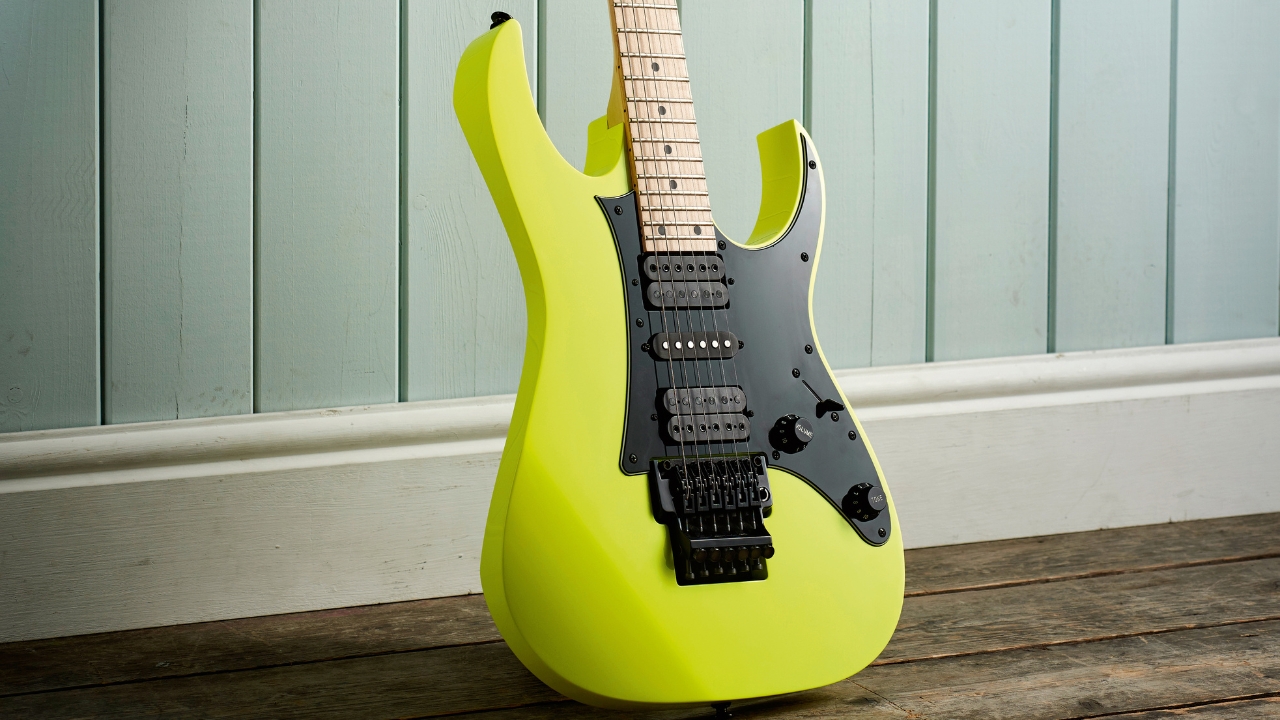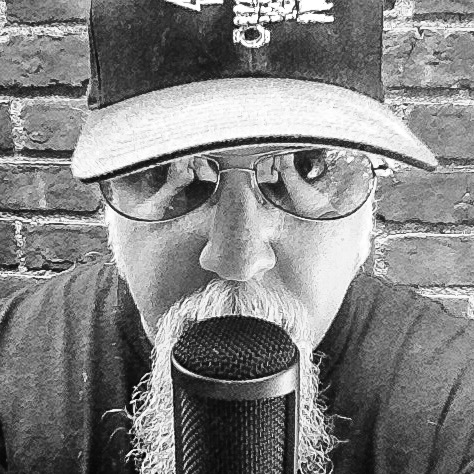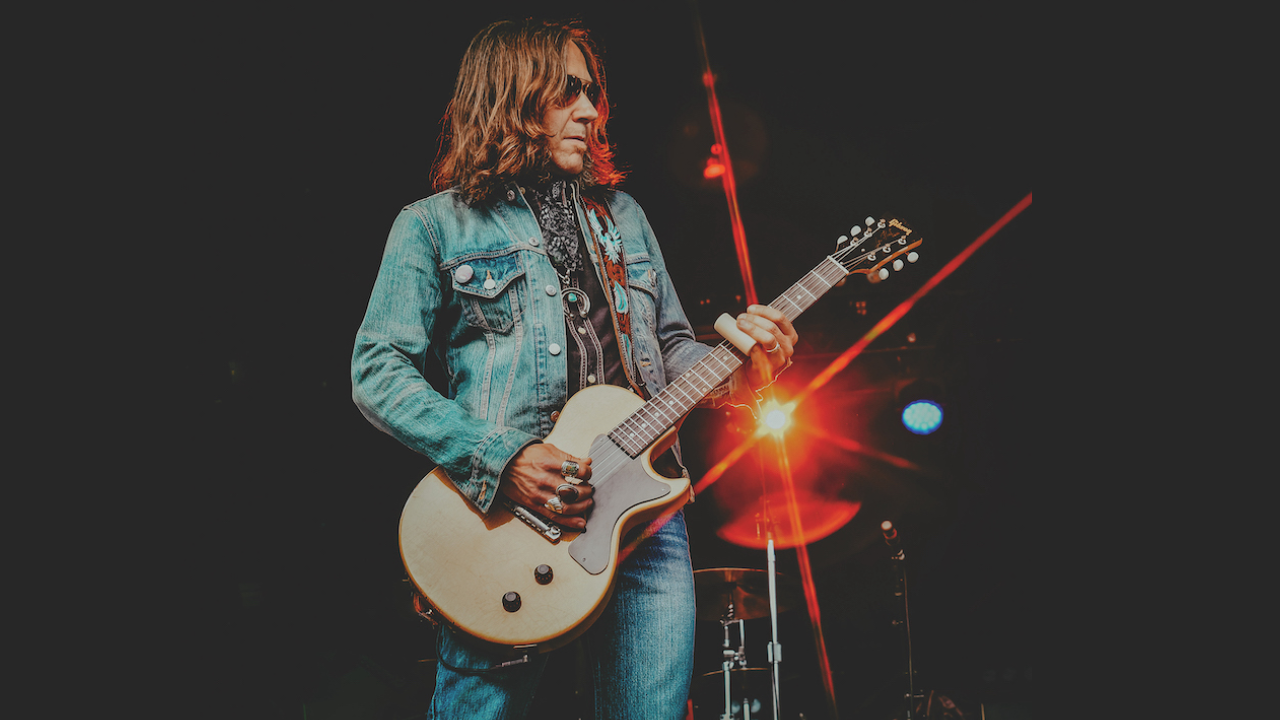“Boldly established Ibanez as a new contender in the highly competitive Superstrat market”: How Ibanez’s era-defining RG550 transformed high-performance guitar
It had the tones, it had the super-stable floating vibrato for divebombs, and it had the fastest neck around. The RG550 pushed shred guitar further and faster – just ask Paul Gilbert

During the mid ’80s, Ibanez became stuck in a rut. Although the company’s guitars sold pretty well, they were rapidly losing market share to up-and-coming competitors like Charvel/Jackson, Hamer, B.C. Rich and particularly Kramer.
Ibanez’s Superstrat (Blazer and Roadstar) and pointy DT, Rocket Roll and X series models failed to generate more than moderate excitement, even with endorsements from heavy hitters like Phil Collen, Allan Holdsworth and Steve Lukather.
Some of the problems were external, like a weakening dollar that made Japanese import guitars less of a bargain, but Ibanez also failed to keep up with guitar design trends that were changing rapidly.
Hoping to avert disaster, Ibanez’s Japanese leadership looked to their U.S.-based distributors to develop new model designs, engaging the West Coast subsidiary Chesbro in a friendly competition against their East Coast counterpart Hoshino USA.
Led by Mark Wittenberg, Chesbro devised the Radius guitar, while Hoshino USA (which included Rich Lasner, Bill Cummiskey and Bill Reim) offered the Maxxas, Power and Saber models.
At the same time, the Americans aggressively pursued new up-and-coming talent, mostly culled from Mike Varney’s Spotlight column in Guitar Player.
Their biggest success was landing Steve Vai’s endorsement and collaborating with him on his signature JEM model. The completely revamped Ibanez electric guitar lineup made its debut at the 1987 Winter NAMM Convention in Anaheim and instantly generated a huge buzz of excitement in the guitar community.
All the latest guitar news, interviews, lessons, reviews, deals and more, direct to your inbox!
The most successful model to come from this new era was the RG550. In essence, it was a more affordable variation of Vai’s JEM model with more conventional features that included a super-slim Wizard neck with maple or rosewood fretboard, flat 16.9-inch radius and 24 jumbo frets, lightweight basswood body and humbucker/single/humbucker pickup configuration.
Controls were stripped down to a master volume, master tone and five-position blade pickup switch that provided a useful variety of humbucking and single-coil tones. The V1 (neck) and V2 (bridge) high-output humbuckers were designed in the U.S. and featured Alnico 5 magnets.
Perhaps the most important feature was the newly designed Edge double-locking tremolo. Ibanez’s earlier tremolo systems were considered inferior to the Floyd Rose and Kahler units used by their competitors, but the Edge tremolo quickly gained acclaim as one of the best available alternatives to the Floyd Rose.
With hot-rodded features like its Edge tremolo, high-output pickups and aggressive styling highlighted by deep cutaways with sharp horns and updated six-on-a-side headstock design based on that of the Iceman model, the RG550 boldly established Ibanez as a new contender in the highly competitive Superstrat market.
Although the RG550 initially only lasted for a seven-year run into the mid-’90s, it has been reissued frequently over the years and morphed into a number of variations. The spirit of the late-’80s original version lives on with the recent RG550 Genesis Collection, but players can also choose from a variety of upscale RG Axe Design Lab, RG j.custom and RG Prestige models.
Notable guitarists who have played RG550 models include Nili Brosh, Larry Mitchell, Blues Saraceno and Dave Urich. Paul Gilbert was one the first major shredders to play an RG550, and several of his signature Ibanez PGM models over the years were based on the RG550.
- This article first appeared in Guitar World. Subscribe and save.
Chris is the co-author of Eruption - Conversations with Eddie Van Halen. He is a 40-year music industry veteran who started at Boardwalk Entertainment (Joan Jett, Night Ranger) and Roland US before becoming a guitar journalist in 1991. He has interviewed more than 600 artists, written more than 1,400 product reviews and contributed to Jeff Beck’s Beck 01: Hot Rods and Rock & Roll and Eric Clapton’s Six String Stories.
You must confirm your public display name before commenting
Please logout and then login again, you will then be prompted to enter your display name.


